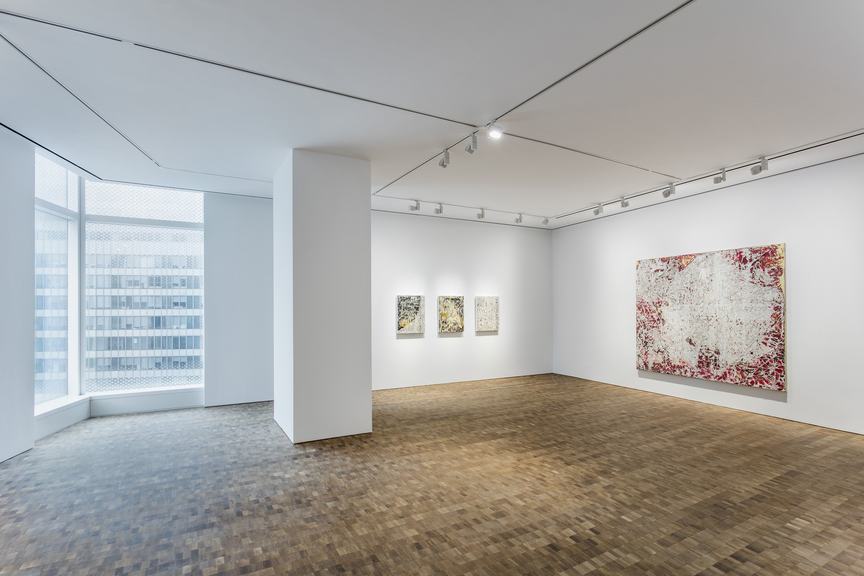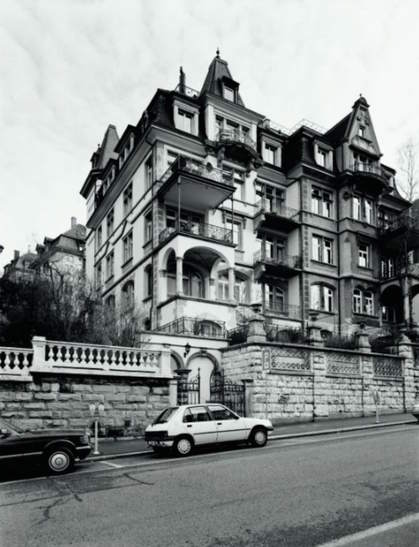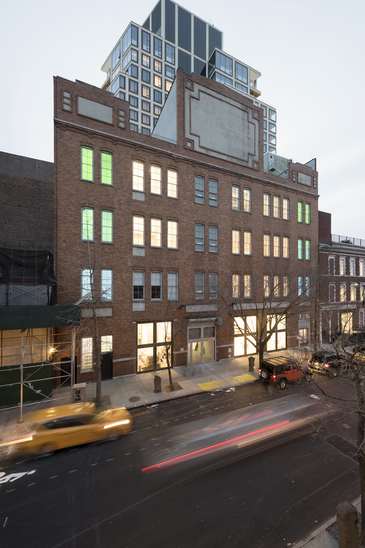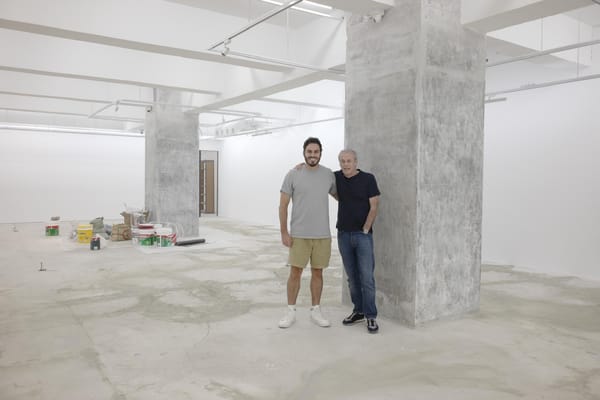People
Building an Empire: Interview with Iwan Wirth


On March 26, there was a line out the entrance of H Queen’s building in Hong Kong. Hundreds of visitors, flown in from abroad and from the city itself, queued patiently for a glimpse of the newly built 24-storey building’s blue-chip tenants, including David Zwirner, Pace gallery, Pearl Lam Galleries and Hauser & Wirth.
The presence of Swiss gallery Hauser & Wirth—the newest addition to Hong Kong’s art scene—created a palpable atmosphere of anticipation for the region. What will all these new galleries mean for the city? For Asia? Hauser & Wirth, who has been steadily expanding across the globe since its inception in 1992 by Iwan and Manuela Wirth and Ursula Hauser, thrived on this momentum by hosting abstract painter Mark Bradford—who is enjoying his moment, after participating in a standout show at the Venice Biennale in 2017—for their inaugural edition, and by throwing a no-holds-barred party at the grandiose-kitsch Western Market, where guest performer Martin Creed banged on piano keys with his derrière.
On the occasion of their opening, ArtAsiaPacific spoke with Iwan Wirth on the expansion of the gallery in Asia and the philosophies of the family-run business.

Expansion of any kind can be tricky, leading to inconsistencies, issues with staffing or insufficient outreach. Yet Hauser & Wirth has successfully expanded over the last 25 years. What are some of the facets of a Hauser & Wirth gallery that must remain consistent, and in what regard are you flexible in terms of management and exhibiting?
A key to our success is that although we are across eight global outposts, at our heart we are still a close family business. It’s almost a philosophy that informs how we behave as colleagues and how we treat our artists and collectors. At the core of everything are our artists, and our relationship with them—putting them first—is one aspect of the business that remains completely consistent. And it’s this principle that guides us through all decision making. It’s partially what brought us to Hong Kong as well. Our artists were excited about the possibilities Asia brings and so led us here. Being a family business, and not overly corporate, means we remain agile and have the flexibility to react to situations and circumstances, which is unusual for a gallery of our size. It means we are constantly thinking creatively and looking for new ways to innovate. It explains why we decided to open a gallery in rural Somerset when all other commercial galleries were focused on more traditional art world hubs.

Your inaugural show brings the work of Mark Bradford to Hong Kong for the second time. How do you think his statements on hierarchical structures and the distribution of power might be received in Asia, where the clusters of power are drastically different to the US or Europe, and the points of reference in history are different too?
The power of Mark Bradford’s work lies in the fact that it is universal—he has a unique ability to look at a sociopolitical landscape, see where the corruption or rupture lies, then through a process of alchemy he brings it to light in a way that everyone can understand it. And whilst the inspiration for a particular work might be a specific location, the work he produces from it is not grounded in a particular place or time. For example, in his map series which we are showing in Hong Kong, his source materials are actually representations of maps so the terrain isn’t recognizable or real, but it exists in our minds and we create our own meaning and touch points from it.
I’ve always been fascinated by the architecture and history of Hauser & Wirth gallery spaces across the globe; from the historic farm buildings in Somerset nestled within bucolic pastures, to the Annabelle Selldorf-designed space in New York, which was a former roller rink and night club back when Chelsea was grungier, a nightlife haven. It seems your team has a distinct aesthetic not just for the gallery and its artists, but also for each location’s space, which is one way of embedding itself into a culture. So I am intrigued as to why you decided to open in the brand-new H Queen’s building, which not only is shared by other galleries but is its own entity. Why not the other areas or individual spaces of Hong Kong, such as the printmaking warehouses of Wong Chuk Hang or even Kowloon, where a giant culture park and museum is being built?
It’s correct that we have a real passion for architecture, and preserving beautiful and architecturally significant and historic structures. We think of ourselves as custodians of these precious buildings. But for Hong Kong we needed something a little more practical, and we were attracted to H Queen’s for a number of reasons. Its location is completely unparalleled and the space is flooded with natural light and is very generous for a city where space is at a premium.
Annabelle can make any space feel distinctly “Hauser & Wirth.” She knows us intimately since we’ve been working with her since the 1990s, and she has overseen six of our galleries. She has transformed the Hong Kong space into a very elegant environment. It feels generous, with a distinctly different look and feel between the two floors. One has an almost industrial feel with concrete floor, and the other has an incredible end-grain wood flooring, with a more intimate and refined atmosphere.


Hauser & Wirth is also one of the few galleries that have expanded into hospitality and accommodations. How do the exhibitions, programming and outreach of the galleries merge or connect with the hospitality strategies?
My wife Manuela and I have founded a hospitality venture which is separate to the gallery, but there is definitely a lot of overlap in approach: both businesses share a philosophy focused on exploring that space where art connects to life. Through our restaurants and hotel projects we celebrate art, nature, architecture and food as essential elements of life.
And actually it’s quite impossible to separate them physically as well as philosophically! Our gallery complexes in Los Angeles and Somerset both include onsite restaurants based on locally sourced fresh food, and at Somerset we also have an incredible six-bedroom guesthouse that dates back to the 18th century.
We are currently restoring a Victorian hotel in Braemar, Scotland, which is due to open towards the end of this year and it will be filled with installations by contemporary artists and incredible art and antiques from the Victorian era. All our hospitality venues have a very strong artistic presence informed by our personal passion and experience.
What is your philosophy on education, for clients/collectors or visitors to the gallery spaces? How can one learn about your roster of artists, your various spaces?
We don’t see our spaces as galleries, but as “energy centers.” We believe that education is an essential part of the gallery life—for us it’s an important part of giving-back and instilling the next generation with a firm love of art. In Somerset alone we welcome over 100 school groups every year, and we have similar activity in Los Angeles. Every show is underpinned by a strong education programme, consisting of practical workshops, activity guides and lectures.
At a time when footfall in galleries is falling, we have found a way to develop audiences and bring record visitor numbers into our gallery spaces through our education programme.
It’s of course also important for the artists, since we are constantly encouraging dialogue about their work. We lead the field in research and scholarship devoted to our artists. We will be starting a similar education programme here in Hong Kong once we are embedded here and can better respond to the community’s needs.
What are your plans for the greater Asia region in terms of further expansion or exhibiting? How do you want the Hauser & Wirth presence to be felt across the region?
Our increasing presence in Asia has never been only about Hong Kong. At the same time as developing our permanent gallery home in H Queen’s we are establishing offices in Beijing and Shanghai to act as central points of contact for our activities in each city. We have some incredible projects coming with museums and other partners in the region, soon to be announced. And we’re also looking to Korea, Japan, Indonesia and Thailand—inspired and excited by projects such as the Modern and Contemporary Art in Nusantara museum in Nusantara and the Sansab Museum of Contemporary Art in Bangkok.
Ysabelle Cheung is managing editor of ArtAsiaPacific.
Mark Bradford’s solo exhibition is on view at Hauser & Wirth, Hong Kong, until May 12, 2018.







